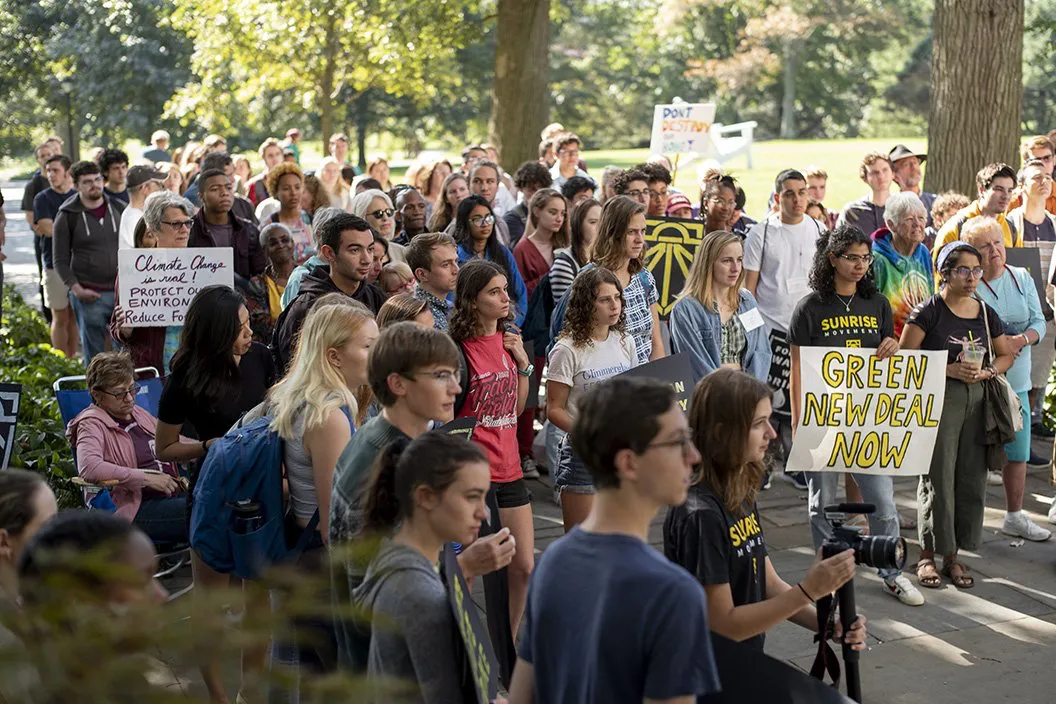Commitment
As an educational institution committed to the greater good, and with recognition of diverse voices that make up our community and the communities around us, Swarthmore is committed to playing a leadership role in the transition to a just and sustainable world.
- Climate Emergency Declaration
President Valerie Smith underscored Swarthmore’s commitment to climate action in September 2019 by signing the Sustainable Development Goals Climate Emergency Letter, adding the College to the growing list of more than 160 higher and further education institutions around the world that have collectively declared a global climate emergency. According to President Smith, “The climate crisis poses an unprecedented challenge to our global society — a challenge that we must meet with urgency and action. Institutions of higher learning are uniquely positioned to facilitate informed discussions of this crisis and ways it can be addressed.”
- Carbon Neutrality
The College has committed to achieving carbon neutrality no later than 2035. In support of this commitment, we have developed a comprehensive energy plan, called To Zero By Thirty-Five (20X35), which charts our path to eliminating our Scope 1 and 2 emissions on campus.
- Climate Action Planning
Swarthmore is working to address the climate crisis in a variety of ways. Following then-President Rebecca Chopp’s signature of the American College & University Presidents' Climate Commitment (now the Carbon Leadership Commitment) in 2010, Swarthmore developed the College’s first greenhouse gas inventory and convened a Climate Action Planning Committee to create a Climate Action Plan.
Action
To uphold these commitments, Swarthmore is taking decisive action to reduce greenhouse gas emissions and decarbonize our campus.
- 20X35
The College’s ambitious energy plan, To Zero By Thirty-Five (20X35), charts a transformative path to efficient, combustion-free energy on campus. By 2035, buildings across campus will be connected to a new heating and cooling geoexchange system. Powered by renewable energy, the process extracts heat from buildings during the summer and stores it underground for use in the winter — all while producing zero carbon emissions. Together with ongoing energy efficiency improvements across campus buildings, onsite solar and off-site renewable energy procurement, and a standby electricity generation plant, the College is positioned to significantly reduce our carbon emissions and reach carbon neutrality by 2035.
- Carbon Charge Program
In order to support emissions reductions on campus, educate our campus community, and support broader policy action in the face of the climate crisis, Swarthmore implemented an internal Carbon Charge Program in 2016. This award-winning program consists of three components: an internal carbon fee and air travel carbon fee on College departments, and a shadow price used in capital planning decisions. Learn more here.
- Scope 3 Emissions
In order to reach its ambitious goal to achieve carbon neutrality by 2035, the College will need to implement strategies to reduce Scope 3 emissions as much as possible. Scope 3 emissions are those not directly controlled by the institution but considered critical to the College’s mission and operations— they can include things like employee commuting and College-sponsored travel. Learn more about the College’s Scope 3 Emissions Strategy.
Measurement and Reporting
Each year, the Office of Sustainability oversees the compilation of an annual greenhouse gas inventory to share emissions numbers from campus sources and track trends year-to-year. The College's first greenhouse gas inventory was developed alongside the College's Climate Action Plan. Reports from recent years can be found below:
- Greenhouse Gas Inventory Report FY23 (most recent)
- Greenhouse Gas Inventory Report FY22
- Greenhouse Gas Inventory Report FY21
- Greenhouse Gas Inventory Report FY20
Summary reports after 2021 are publicly available through the new Public Reporting Module, created in partnership between Second Nature and UNH SIMAP. Summary reports prior to 2021 are publicly available through Second Nature’s reporting platform.




